Flood Damaged Vehicles: Warranty Repair Implications Explained

Flood damaged vehicle repair presents unique challenges, as moisture can infiltrate and cause intern…….
In a world where climate change intensifies extreme weather events, the impact of floods on communities and their assets has become an increasingly pressing concern. Among the affected entities are vehicles, which, when submerged in floodwaters, can sustain significant damage. This phenomenon has given rise to a specialized field: flood damaged vehicle repair. This comprehensive article delves into the intricacies of this complex process, exploring its historical foundations, global implications, economic significance, technological breakthroughs, regulatory frameworks, and future trajectory. By examining case studies and addressing challenges, we aim to equip readers with a holistic understanding of flood damaged vehicle repair, highlighting its critical role in post-flood recovery efforts.
Definition: Flood damaged vehicle repair refers to the specialized process of assessing, restoring, and rehabilitating motor vehicles that have been subjected to flooding. This intricate task involves a multi-step approach, from initial inspection and water extraction to meticulous drying, component replacement, and quality assurance testing. The primary goal is to return the vehicle to its pre-flood condition or, in some cases, to a safe, roadworthy state.
Core Components:
Inspection and Water Extraction: The process begins with a thorough inspection of the vehicle to identify water intrusion points, damage extent, and potential structural integrity issues. Skilled technicians employ advanced tools for water extraction, ensuring minimal residual moisture remains.
Drying and Dehumidification: To prevent rust and mold growth, vehicles are placed in controlled drying environments. This step may involve the use of specialized drying equipment, dehumidifiers, and heating systems to accelerate the process.
Component Assessment and Replacement: Every part of the vehicle is meticulously evaluated for damage. Replaceable components, such as electronics, seats, and trim, are either repaired or replaced. In cases where parts are beyond repair, original equipment manufacturer (OEM) replacements are sourced.
Painting and Finishing: Restored vehicles undergo a meticulous repainting process to match their original factory finishes. This step ensures aesthetics and helps protect the vehicle’s exterior from future corrosion.
Quality Assurance Testing: Before a flood-damaged vehicle is released, it undergoes rigorous quality assurance tests, including roadworthiness inspections, safety system checks, and performance evaluations, ensuring it meets regulatory standards.
Historical Context: The practice of repairing vehicles damaged by floods dates back to the early 20th century when motorcars became more prevalent. However, it gained significant prominence in the late 1990s and early 2000s due to a series of severe flooding events globally. This period saw the development of specialized equipment and techniques, laying the groundwork for the sophisticated repair practices employed today.
Flood damaged vehicle repair has a profound international reach, with varying degrees of implementation and sophistication across regions. Here’s a geographical breakdown:
North America: The United States and Canada have well-established flood damaged vehicle repair industries, driven by frequent flooding events and stringent consumer protection laws. Advanced technologies, such as water extraction systems and specialized drying equipment, are widely adopted.
Europe: Countries like Germany and the UK have robust automotive industries and organized salvage networks, making their flood damage repair processes efficient. However, variations exist due to differing climate patterns and regulatory frameworks.
Asia Pacific: Rapid urbanization and changing climates have led to increased flooding in many Asian countries. Japan, for example, has developed innovative techniques for water extraction and corrosion prevention, while Australia has implemented comprehensive training programs for technicians.
Latin America and Africa: These regions often face unique challenges due to diverse climate conditions and limited resources. Nevertheless, there are promising initiatives, with some countries adopting digital solutions for damage assessment and inventory management.
The economic implications of flood damaged vehicle repair are significant, influencing both the automotive industry and the broader economy:
| Economic Aspect | Description |
|---|---|
| Market Size: The global market for flood damaged vehicle repair is substantial, estimated at USD 5 billion in 2022. This figure is projected to grow at a CAGR of 4% from 2023 to 2030, driven by increasing flooding events and rising vehicle ownership. | |
| Employments: The industry supports numerous jobs, ranging from skilled technicians and assessors to administrative staff and business owners. In the US, for instance, it is estimated that over 15,000 people are employed in this sector. | |
| Insurance Claims: Flood-related vehicle damage results in substantial insurance claims. According to a study by the Insurance Institute for Business & Home Safety (IBHS), flood damage accounts for approximately 7% of all property insurance claims in the US. | |
| Economic Recovery: Efficient flood damaged vehicle repair services play a crucial role in post-disaster economic recovery. By facilitating the return of vehicles to service, it helps individuals and businesses resume their activities, contributing to regional economies. |
Technological breakthroughs have revolutionized flood damaged vehicle repair, enhancing efficiency, accuracy, and sustainability:
Advanced Water Extraction Systems: Modern water extraction tools, including high-pressure washers and vacuum systems, enable faster and more efficient removal of floodwaters, minimizing damage to electrical components and other sensitive parts.
Moisture Monitoring Devices: These devices, when integrated into drying processes, provide real-time data on moisture levels, ensuring vehicles are dried optimally, reducing the risk of mold and corrosion.
Digital Damage Assessment Tools: Mobile apps and software platforms allow technicians to document damage with precision, streamline insurance claims processing, and facilitate better inventory management.
3D Printing and Custom Parts Fabrication: The ability to print and fabricate custom vehicle parts on demand offers cost savings and faster turnaround times compared to traditional OEM replacement parts.
Regulatory frameworks play a pivotal role in shaping the flood damaged vehicle repair industry, ensuring consumer protection, safety standards, and environmental sustainability:
Vehicle Safety Standards: Organizations like the National Highway Traffic Safety Administration (NHTSA) in the US set regulations for vehicle safety systems, which must be functional after any water damage to ensure driver and passenger safety.
Environmental Regulations: Strict guidelines govern the disposal of contaminated materials and the use of environmentally friendly drying agents, reflecting a global push towards sustainability.
Consumer Protection Laws: These laws protect consumers from fraudulent repair practices and ensure they are compensated fairly for flood damage repairs. In many countries, licensed and insured repair facilities are required to operate transparently.
Despite its advancements, the flood damaged vehicle repair industry faces several challenges:
Lack of Standardization: The absence of universal repair protocols and training programs across regions can lead to inconsistent quality of repairs, affecting customer satisfaction.
Insufficient Insurance Coverage: Some insurance policies may not adequately cover flood damage, leaving policyholders with substantial out-of-pocket expenses for vehicle repairs.
Environmental Concerns: The use of toxic drying agents and the potential release of hazardous substances during water extraction require strict environmental regulations and responsible disposal practices.
Proposed Solutions:
Standardization and Certification: Implementing global standards and certification programs for technicians can ensure consistent repair quality. Organizations like the International Association of Flood Repair Professionals (IAFRP) offer training and accreditation, fostering a culture of excellence.
Enhanced Insurance Coverage: Insurance providers should consider expanding flood damage coverage to address potential losses, ensuring policyholders are better protected during severe weather events.
Green Drying Technologies: Investing in research and development for eco-friendly drying agents and water extraction systems can mitigate environmental impacts while maintaining efficient repair processes.
In the aftermath of Hurricane Harvey in 2017, Houston faced an unprecedented number of flood-damaged vehicles. The local auto repair industry responded by:
Collaborating with Insurance Companies: Repair shops worked closely with insurers to streamline claims processing, reduce wait times, and provide transparent pricing.
Implementing Mobile Repair Units: Some businesses deployed mobile units equipped with advanced water extraction equipment and drying facilities, allowing them to reach affected areas promptly.
Community Outreach Programs: Local repair shops offered free initial inspections and temporary transportation to flood victims, fostering community support.
Lessons Learned: Rapid response, collaboration, and community engagement are key to successful post-flood vehicle recovery.
Japan’s unique challenge of frequent flash floods led to the development of cutting-edge water extraction systems. Japanese repair facilities employ:
High-Pressure Washers: These powerful washers swiftly remove surface and subsurface water, minimizing corrosion and damage to electronic components.
Vacuum Drying Systems: Vacuum drying ensures efficient removal of moisture from hard-to-reach areas, preventing mold growth and ensuring faster drying times.
Advanced Corrosion Prevention: Japan’s stringent environmental regulations have driven the adoption of eco-friendly corrosion inhibitors, reducing the environmental impact of repair processes.
Outcome: Tokyo’s flood damaged vehicle repair industry has achieved a reputation for excellence, with vehicles returned to owners in pristine condition, fostering customer trust and satisfaction.
The future landscape of flood damaged vehicle repair is poised for growth and transformation, driven by technological innovations and evolving global trends:
Digital Transformation: The industry will continue to embrace digital solutions, from cloud-based damage assessment tools to artificial intelligence (AI)-powered diagnostic systems. These technologies promise improved efficiency, data-driven decision-making, and personalized customer experiences.
Sustainable Practices: Environmental sustainability is expected to be a prominent focus, with the development of biodegradable drying agents, recycled materials for repairs, and eco-friendly water extraction systems.
Remote Repair and Virtual Services: Advancements in telemedicine and remote diagnostics may enable technicians to provide initial assessments and guidance from remote locations, expanding access to expertise in underserved areas.
Global Collaboration: As flooding becomes a more widespread concern, international collaboration will be crucial for sharing best practices, developing global standards, and fostering knowledge exchange among repair professionals.
Flood damaged vehicle repair is a critical component of post-disaster recovery efforts, with significant economic, social, and environmental implications. The industry’s evolution from rudimentary practices to sophisticated technologies underscores its importance. As we look ahead, addressing challenges through standardization, enhanced insurance coverage, and green initiatives will be essential. Embracing emerging trends, such as digital transformation, sustainable practices, and remote repair services, will shape the future of this dynamic field, ensuring vehicles are restored efficiently, sustainably, and reliably in a changing world.
Q: How do I know if my vehicle is safe to drive after flooding?
A: It’s crucial to have a thorough inspection by a qualified technician. They will assess water intrusion, electrical system integrity, structural damage, and safety systems to determine roadworthiness.
Q: What should I do immediately after my vehicle submerges in floodwaters?
A: First, ensure your safety by exiting the vehicle. Then, call your insurance provider and local repair facilities for guidance. Do not attempt to drive or start the engine until a professional has inspected the vehicle.
Q: Can flood damage be completely reversed, or will my car always have traces of water?
A: Complete reversal is challenging, but skilled technicians can minimize water traces significantly. Proper drying and corrosion prevention measures ensure the vehicle’s long-term performance and aesthetics.
Q: Are there environmental risks associated with flood damaged vehicles?
A: Yes, if not handled properly, floodwater can contain contaminants, leading to environmental pollution. Reputable repair facilities follow strict guidelines for disposing of contaminated materials and using eco-friendly drying agents.
Q: How can I protect my vehicle from future flooding?
A: Invest in a reliable vehicle with water intrusion protection features. Regularly maintain your car’s electrical system and ensure the doors and windows have proper sealing to prevent water penetration.

Flood damaged vehicle repair presents unique challenges, as moisture can infiltrate and cause intern…….
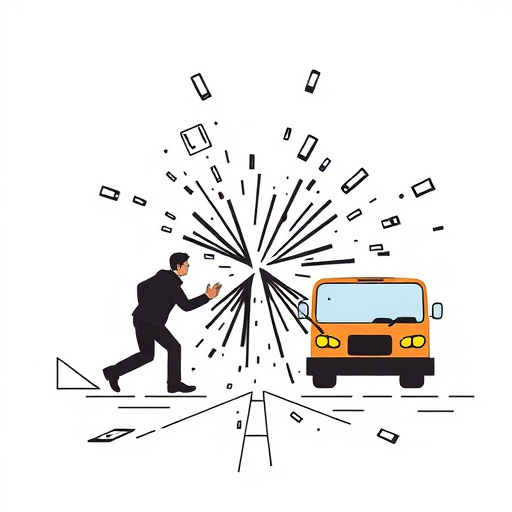
Flood damaged vehicle repair begins with a thorough visual inspection and use of specialized tools t…….
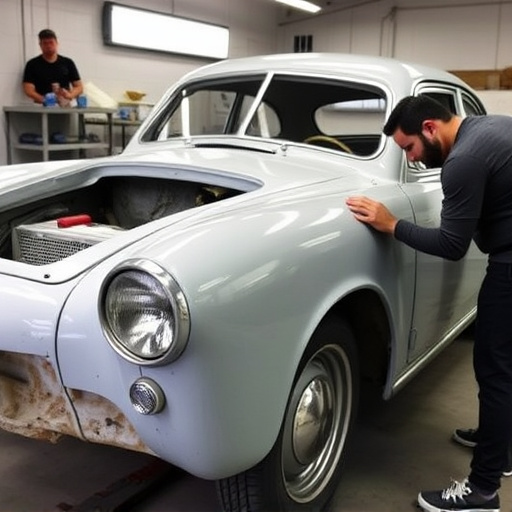
Flood damaged vehicle repair prioritizes HVAC system assessment and restoration for comfort, safety,…….
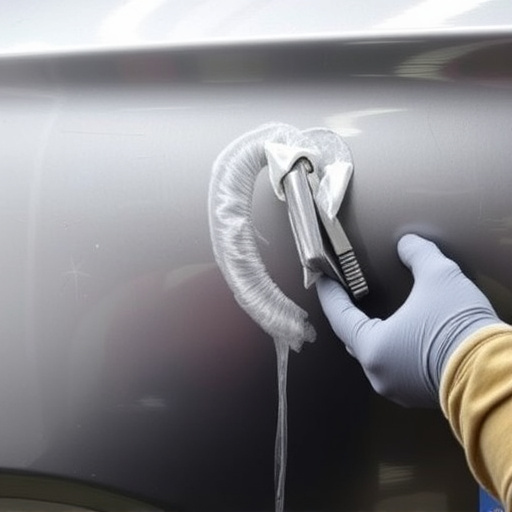
Flood damaged vehicle repair goes beyond visual inspection, requiring advanced diagnostic techniques…….

Flood damage poses complex challenges for vehicles, from water intrusion affecting electronics and i…….
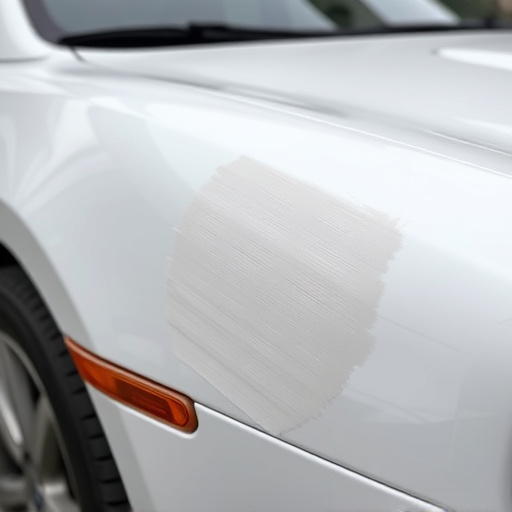
Before repairing a flood-damaged vehicle, conduct a comprehensive assessment for water intrusion and…….
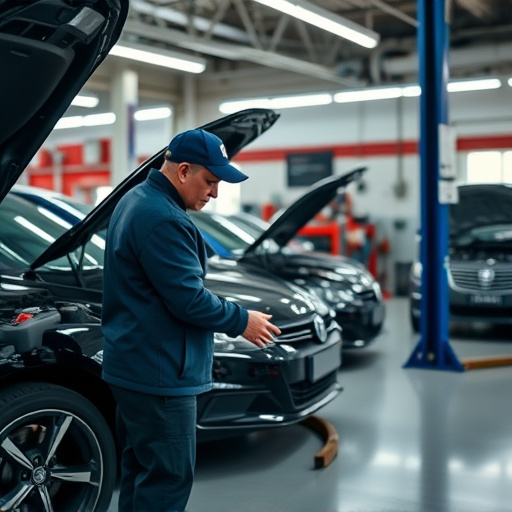
Undercarriage inspection techniques are vital for efficient flood damaged vehicle repair, especially…….
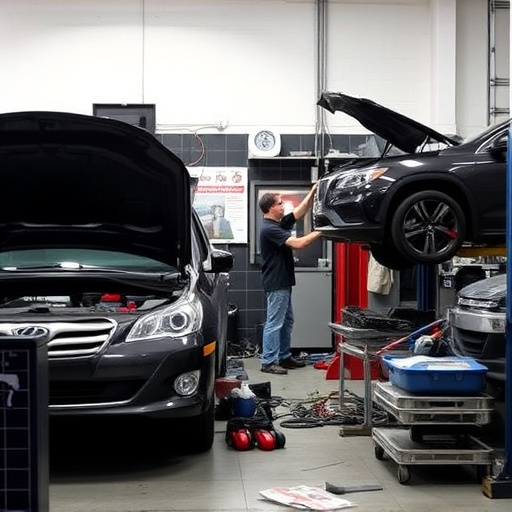
After a flood, immediate priorities for vehicle owners are safety and risk mitigation. Assess struct…….

Flood damaged vehicle repair is a specialized field requiring advanced knowledge and equipment to ad…….